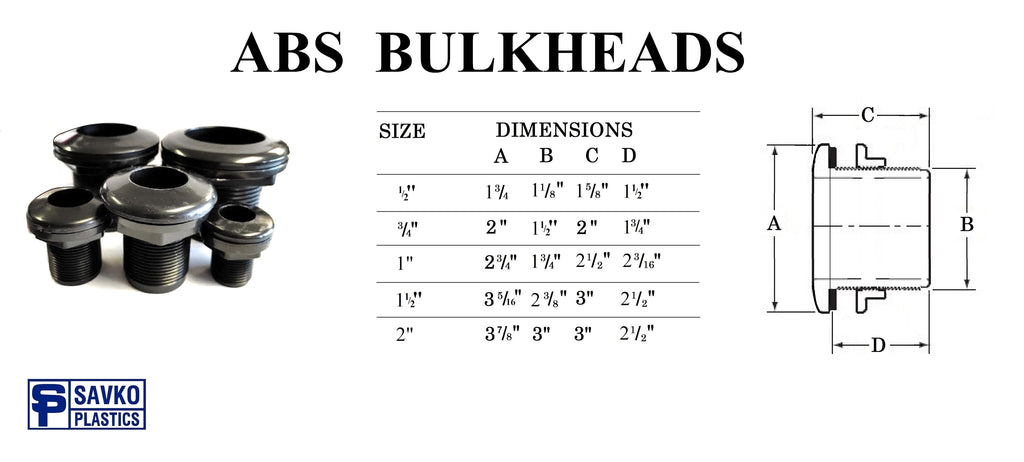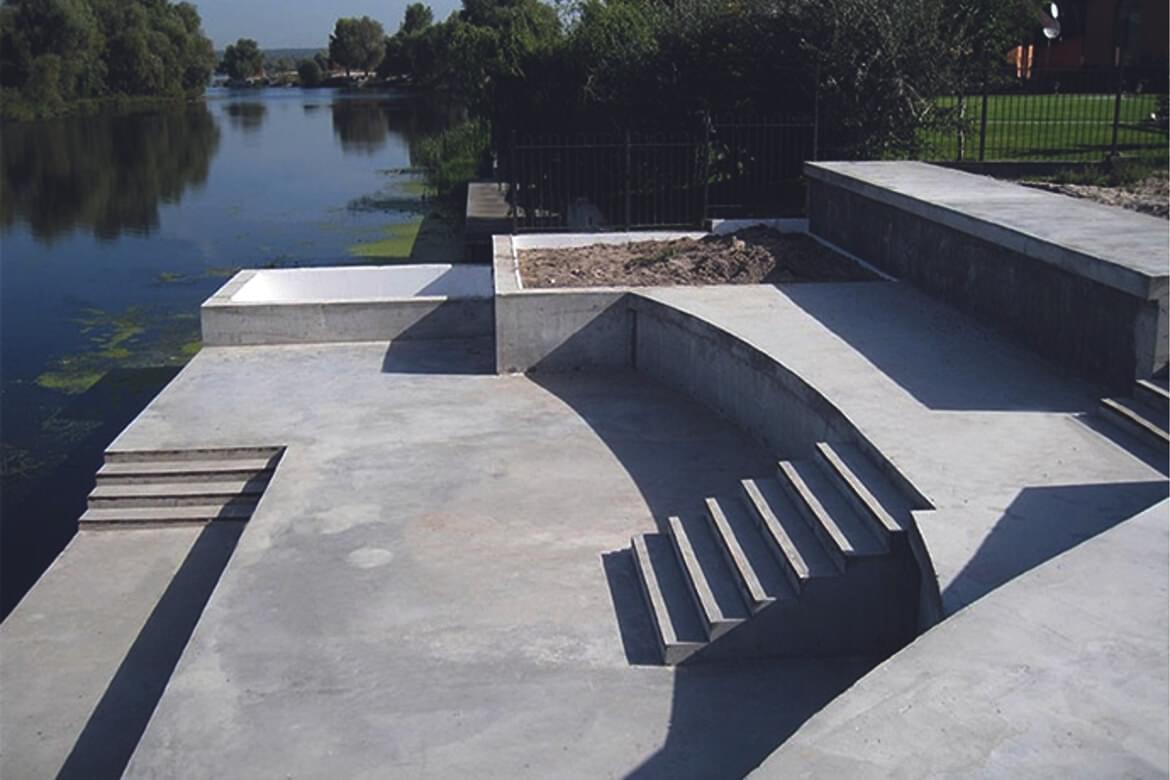Exploring the Various Uses Bulkhead Structures in Modern Design
Bulkhead structures play a considerable role in modern-day design, serving both practical and visual functions. They can define spaces, boost storage space remedies, and boost lights. In business setups, they serve as prime focus that mirror brand name identification - Bulkhead on Lake Livingston. Additionally, their integration typically sustains audio management and sustainable methods. Comprehending the complete extent of their applications exposes much regarding modern style patterns and user experience. What cutting-edge uses bulkheads might emerge in the future?
Defining Bulkhead Structures
Bulkhead structures play a critical role in modern style, functioning as crucial components in numerous structure layouts. These structures are normally specified as raised ceilings or systems, often made use of to hide mechanical systems, circuitry, or plumbing. Bulkheads can be found in both domestic and business settings, where they give a smooth blend of performance and looks. Their design can integrate lights components and various other attractive aspects, improving the overall visual allure of a room.
Typically created from materials such as steel, drywall, or wood, bulkheads can be tailored to fit the building style and needs of the structure (Bulkhead on Lake Livingston). They serve not only to conceal unsightly infrastructure yet additionally to create defined zones within open areas. By handling the circulation of a space, bulkheads add to the spatial organization, making them a substantial aspect of modern architectural practice. Subsequently, their definition envelops both aesthetic and sensible dimensions
Practical Applications in Residential Style
Bulkhead structures play an important role in residential layout by helping with area optimization approaches that take full advantage of usable areas. In addition, they contribute visual design aspects that improve the aesthetic allure of living spaces. On top of that, these frameworks offer crucial architectural support remedies, making certain the integrity and security of the home.
Space Optimization Methods
As modern-day household layouts significantly focus on effective use of area, ingenious techniques arise to take full advantage of performance without sacrificing aesthetic appeals. One prominent strategy includes the combination of bulkhead structures, which can define areas while giving important storage options. These frameworks can be used to develop vertical storage space systems that enhance both organization and ease of access. Additionally, multi-functional furnishings, such as collapsible tables and convertible couches, matches bulkhead styles, enabling rooms to adjust to differing requirements. Open up floor strategies additionally optimize spatial flow, urging adaptability in use. Including built-in shelving and recessed lighting within bulkheads also contributes to a streamlined environment, guaranteeing that every inch of area is used successfully and harmoniously within the overall style.
Visual Style Elements

Structural Support Solutions
In contemporary domestic style, an effective structural support solution is necessary for keeping the honesty of areas while optimizing layout and functionality. Bulkhead structures play a significant role in this scenario, serving as both assistance and partitioning elements. They can hide mechanical systems, such as plumbing and electrical wiring, while offering support to the ceiling and floor systems. By tactically putting bulkheads, designers can create defined areas within open floor strategies, boosting functionality without jeopardizing structural stability. In addition, these structures can accommodate lighting components, adding to both looks and usefulness. To sum up, bulkhead frameworks are essential in domestic layout, offering functional support remedies that improve both the functionality and aesthetic allure of living spaces.
Enhancing Aesthetics in Commercial Rooms
When industrial rooms accept innovative bulkhead frameworks, they not only specify physical limits however likewise significantly boost the overall visual appeals of the environment. These building aspects work as aesthetic prime focus, attracting attention and creating a feeling of intrigue. By integrating diverse materials such as metal, timber, or glass, bulkheads can mirror a brand's identity and goal, adding to a natural layout.
The critical placement of bulkheads can control light and darkness, adding deepness and measurement to otherwise level spaces. This interplay can transform a business location right into a welcoming environment, motivating customer involvement. Additionally, the usage of color and texture in bulkhead design can stimulate particular emotions, enhancing the overall consumer experience. Eventually, the thoughtful assimilation of bulkhead structures raises the aesthetic appeal of industrial areas, making them not just useful but likewise visually charming, thereby promoting an enduring impression on site visitors.
Acoustic Performance and Noise Administration
Reliable acoustic efficiency plays an essential function in modern-day style, specifically within commercial spaces where sound administration is crucial. Bulkhead frameworks can substantially boost acoustic high qualities by taking in sound, reducing reverberation, and mitigating noise transfer in between areas. These features are particularly helpful in settings such as workplaces, movie theaters, and restaurants, where clear communication and an enjoyable auditory experience are paramount.
The critical placement and design of bulkheads can aid produce sound-buffer areas, properly separating loud locations from quieter ones. Materials made use of in bulkhead construction, such as soft finishes and acoustic panels, add to their sound-dampening capabilities. Additionally, the unification of bulkheads enables the assimilation of sound-absorbing elements without endangering visual allure. By attending to acoustic efficiency, designers can develop harmonious environments that improve comfort, improve user experience, and promote efficiency, making bulkheads an essential element in the layout of contemporary commercial spaces.
Incorporating Bulkheads for Reliable Space Use
Usually neglected, the assimilation of bulkheads in architectural design can considerably boost area use in modern-day buildings. These architectural aspects offer several sensible purposes, supplying a way to conceal mechanical systems, electric circuitry, and plumbing without compromising aesthetics. By strategically positioning bulkheads, engineers can create defined areas within open flooring plans, thereby promoting better organization and flow.
Bulkheads can integrate storage space remedies and lighting functions, maximizing the functionality of or else thrown away upright room. In residential setups, they may delineate areas such as kitchen areas or living areas, while in commercial areas, they can improve the effectiveness of designs by clearly marking paths and workspace.
Eventually, the thoughtful integration of bulkheads adds to a more well organized and visually enticing setting, enabling adaptable rooms that can advance with the requirements of their passengers. This strategy not only maximizes room however also fosters a more unified interaction between kind and feature.
Bulkheads in Public Design

Building Visual Enhancements
While several building elements objective for performance, bulkheads in public design offer a dual purpose by enhancing visual allure. These redirected here structures frequently develop visual passion with their layout, incorporating flawlessly with bordering aspects. By employing different materials, appearances, and colors, bulkheads can add to an one-of-a-kind identity for public rooms, such as flight terminals, museums, and collections. Their calculated positioning assists to delineate locations, assisting visitors while including deepness to the general design. Additionally, bulkheads can highlight lighting, producing vibrant environments about his that alter throughout the day. This aesthetic enhancement not only elevates the visitor experience however also fosters a sense of place, making bulkheads a vital consideration in contemporary public design. Generally, bulkheads embody the fusion of kind and feature.

Architectural Assistance Solutions
As designers look for innovative means to enhance the architectural integrity of public rooms, bulkheads become important parts in the design and building and construction procedure. These structures offer vital assistance, particularly in areas subject to hefty foot traffic or dynamic tons. By distributing weight equally, bulkheads help prevent structural failure while permitting functional design choices. In big places, such as stadiums and convention facilities, bulkheads are often integrated into the overall architectural framework, guaranteeing security and security. Furthermore, they can promote the consolidation of energies and mechanical systems, adding to the performance of room use. Ultimately, bulkheads stand for a crucial remedy in contemporary public design, enhancing both functionality and security in community-focused atmospheres.
Environmental Defense Measures
Integrating environmental management steps into public architecture has actually come to be increasingly crucial as metropolitan developers prioritize sustainability alongside structural support. Bulkhead structures serve a twin function in this respect, serving as barriers against disintegration and flooding while at the same time improving the visual charm of city landscapes. Their layout frequently consists of natural environments such as plants, which can enhance air top quality and supply habitats for wildlife. Additionally, bulkheads can be engineered with permeable materials that allow for water absorption, minimizing overflow and promoting groundwater recharge. This integration of ecological considerations not just preserves the environment however also cultivates community resilience versus climate modification. By making use of bulkheads efficiently, architects add to lasting city development that aligns with contemporary ecological objectives.
Future Fads in Bulkhead Layout
Arising fads in bulkhead layout mirror a growing emphasis on sustainability, technology, and functionality in modern-day architecture. Developers are significantly including eco-friendly products, such as recycled composites and bioplastics, to decrease environmental influence. Furthermore, the assimilation of clever modern technology is becoming prevalent, allowing bulkheads to serve multi-functional functions, including power storage and environment control.
In urban settings, modular bulkhead systems are obtaining grip, using versatility in design and convenience of installment. These systems can be adjusted to numerous landscapes, permitting reliable area application. Additionally, aesthetic factors to consider are advancing; bulkheads are currently being created to improve aesthetic allure, commonly incorporating artistic components that reverberate with regional society.
As environment durability comes to be a concern, future bulkhead layouts will likely focus on flooding protection and stormwater administration, making sure structural integrity while dealing with ecological challenges. This shift represents a holistic method to design that satisfies both environmental obligations and human demands.
Often Asked Questions
What Products Are Commonly Used for Bulkhead Construction?
Usual products for bulkhead construction consist of concrete, steel, hardwood, and composite materials. These choices provide durability, structural stability, and resistance to ecological elements, making them ideal for various applications in building and construction and engineering our website jobs.
Just How Do Bulkheads Affect Structure Energy Performance?
Bulkheads boost developing power effectiveness by giving thermal insulation and lowering air leak (Bulkhead on Lake Livingston). They assist preserve interior temperatures, consequently decreasing home heating and cooling needs, eventually resulting in reduced energy prices and improved ecological sustainability
Exist Any Building Regulations Particular to Bulkhead Frameworks?
Yes, developing codes details to bulkhead structures exist, varying by place. These laws usually address safety and security, architectural stability, and availability, making sure that bulkheads satisfy required standards for construction and style within a given jurisdiction.
Can Bulkheads Be Conveniently Customized or Eliminated Later On?
Bulkheads can usually be customized or gotten rid of, depending upon their layout and building and construction. Such changes may need careful preparation and adherence to building codes to assure structural integrity and security are kept throughout the procedure.
What Are the Expenses Connected With Installing Bulkhead Structures?
The costs connected with mounting bulkhead structures can vary significantly, typically affected by materials, design intricacy, and labor. Usually, expenses vary from modest to high, depending on the job's certain needs and area.
Bulkhead frameworks play a critical role in modern-day design, offering as important components in numerous building layouts. Bulkhead frameworks play a vital role in household design by facilitating room optimization methods that make best use of functional locations. Typically ignored, the integration of bulkheads in building layout can greatly boost space use in modern structures. As architects look for innovative methods to boost the architectural honesty of public areas, bulkheads emerge as important elements in the style and construction process. The costs connected with installing bulkhead structures can differ substantially, generally affected by materials, style intricacy, and labor.